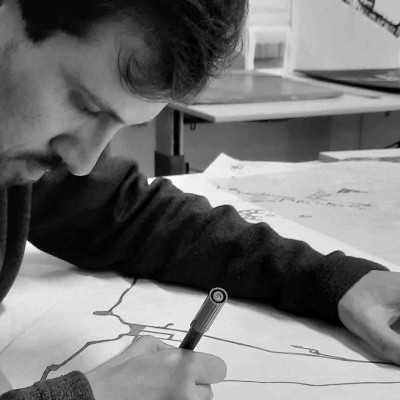5 key facts about this project
At its core, this project represents a commitment to modern architectural practices that respect the environment. The design is inherently functional, addressing the needs of its occupants while simultaneously considering the broader ecological impact. The architecture prioritizes open spaces that facilitate movement and interaction, allowing natural light to permeate through well-placed openings, enhancing the overall ambiance of the interiors. This approach creates a flowing space that encourages collaboration and socialization among users, which is essential for its intended function.
Key elements of the project include a robust structural framework that combines durability with aesthetic appeal. The selection of materials is particularly noteworthy; the use of reinforced concrete ensures structural integrity while allowing for flexible design possibilities. Large expanses of high-performance glazing have been strategically employed to enhance visual connectivity between the interior and exterior environments, ensuring that users feel a part of the landscape. The incorporation of sustainable timber accents offers a warm contrast to the concrete and glass, introducing a tactile element that resonates well with visitors.
The project also features local clay brick in its façade, skillfully echoing the architectural vernacular of the surrounding area. This choice not only honors the local context but also introduces a sense of permanence, establishing a dialogue between the past and the present. The design does not shy away from utilizing mild steel elements, which reflect contemporary industrial styles. These structural components are elegantly woven into the design, highlighting an intersection of strength and lightness that enhances the overall aesthetic.
One of the standout aspects of this architectural project is its unique approach to sustainability, which can be observed throughout its design and operational systems. The careful consideration of energy-efficient technologies integrates seamlessly into the architecture, promoting a reduced environmental footprint. Water conservation measures and the careful selection of materials for their ecological benefits further underscore this commitment. By elevating sustainability as a core component, the project stands as an exemplar of how contemporary design can be harmoniously integrated within its natural and built environments.
Moreover, the architectural design does not merely replicate traditional styles; rather, it refreshes and reinterprets them. This project’s innovative use of space reveals a deep understanding of modern living and working conditions. Adaptable spaces accommodate varying functions, supporting both individual and communal activities. The layout intuitively guides users through the building, reinforcing the idea that architecture is not just about the physical structure but also about how it shapes human experiences.
As visitors explore the architecture, they will discover architectural plans and sections that convey the intricate thought process behind the design. Engaging with these details can offer profound insights into the architect's intentions and their approach to form, space, and functionality. The interplay of various architectural ideas is conceived to create a cohesive environment that invites exploration and interaction.
In summary, this architectural project stands as a testament to the possibilities that arise when design knowledge, sustainability, and user needs converge. Its multifaceted approach invites you to delve deeper into the presentation of this project, encouraging an exploration of its architectural plans, sections, and designs that collectively illustrate a meaningful architectural narrative. Experience the architecture for yourself and appreciate how thoughtful design can contribute to a more connected and sustainable future.


 Alexandre Bardet Esteves Ferreira,
Alexandre Bardet Esteves Ferreira, 























